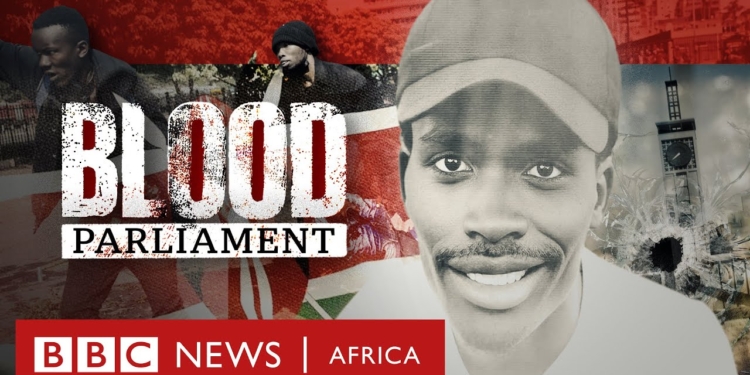Contents
- 1 From Discontent to Demonstration: What Sparked the June 2024 Gen Z Protests in Kenya?
- 1.1 The Economic Squeeze
- 1.2 A Digital, Leaderless Uprising
- 1.3 RelatedPosts
- 1.4 Pope Francis’ Legacy: A Pope for the Poor, the Marginalized, and Global Unity
- 1.5 Trump – Zelensky Spat: Is the Age of Modest Pretense Gone?
- 1.6 Raila Odinga’s Defeat at the AUC Chairmanship Vote: A Turning Point for Kenyan Politics
- 2 The Day Democracy Turned to Blood – June 25th 2024
- 3 Lives Cut Short: The Three Gen-Z Martyrs
- 4 Forensic OSINT: Piecing Together the Truth
- 5 Naming the Shooters: The Findings of the BBC-Africa Eye Documentary – Blood Parliament
- 6 Accountability Deferred: An Institutional Failure
- 7 Political Aftershocks and Fiscal U-Turns
- 8 The Movement Lives On
- 9 The Path to Justice
On June 25, 2024, thousands of Kenyans gathered at the gates of Nairobi’s Parliament to oppose the Finance Bill 2024—a piece of legislation that threatened to raise taxes on essential services at a time when many citizens were already stretched thin. What began as a spirited, mostly peaceful protest ended in tragedy when security forces opened fire on unarmed demonstrators, killing three inside the precinct and injuring dozens more.
For months, official silence and institutional finger-pointing shielded the officers responsible. But BBC Africa Eye’s groundbreaking investigation, Blood Parliament, has now used open-source intelligence (OSINT) and forensic reconstruction to identify the individuals who pulled the triggers—and to lay bare a culture of impunity. Watch the investigation and documentary below; Courtesy of BBC Africa-Eye.
From Discontent to Demonstration: What Sparked the June 2024 Gen Z Protests in Kenya?
The Economic Squeeze
By mid-2024, Kenya’s economy was wrestling with high debt and inflation. The public debt had ballooned to over 68 percent of GDP, and debt-servicing costs gobbled up a large share of government revenue. Meanwhile, inflation hovered above 9 percent, pushing the prices of food, fuel, and healthcare out of reach for many families.
Against this backdrop, Finance Minister Njuguna Ndung’u unveiled the Finance Bill 2024, proposing roughly KSh 300 billion in new revenue through:
16 percent VAT on private hospital services
Digital services taxes on mobile money and streaming platforms
Higher import duties on everyday goods (including bread and motor vehicles)
Environmental levies that would drive up energy and water costs
For young Kenyans—already grappling with a 30 percent youth unemployment rate—the bill felt like the last straw.
A Digital, Leaderless Uprising
Unlike past demonstrations, the #RejectFinanceBill2024 movement had no single organizer. Instead, university students, gig-economy workers, market vendors, and teachers coordinated via TikTok, X (formerly Twitter), WhatsApp, and Instagram.
In just weeks, dense tax code clauses were distilled into shareable infographics; MPs’ numbers were circulated for mass SMS lobbying; and flash-mob protests sprang up in major towns from Mombasa to Kisumu. By June 24, social-media chatter predicted a massive show of force at Parliament on the 25th.
The Day Democracy Turned to Blood – June 25th 2024
A Peaceful March Meets a Fortress
On the morning of June 25, demonstrators started gathering along Parliament Way, many clad in T-shirts bearing slogans like “No More Taxes” and “Ruto Must Go.” Drummers and public address systems (mounted on vehicles) set a carnival-like tone. For two hours, the mood remained celebratory—the protestors dancing and chanting, expressing their democratic right to picket.
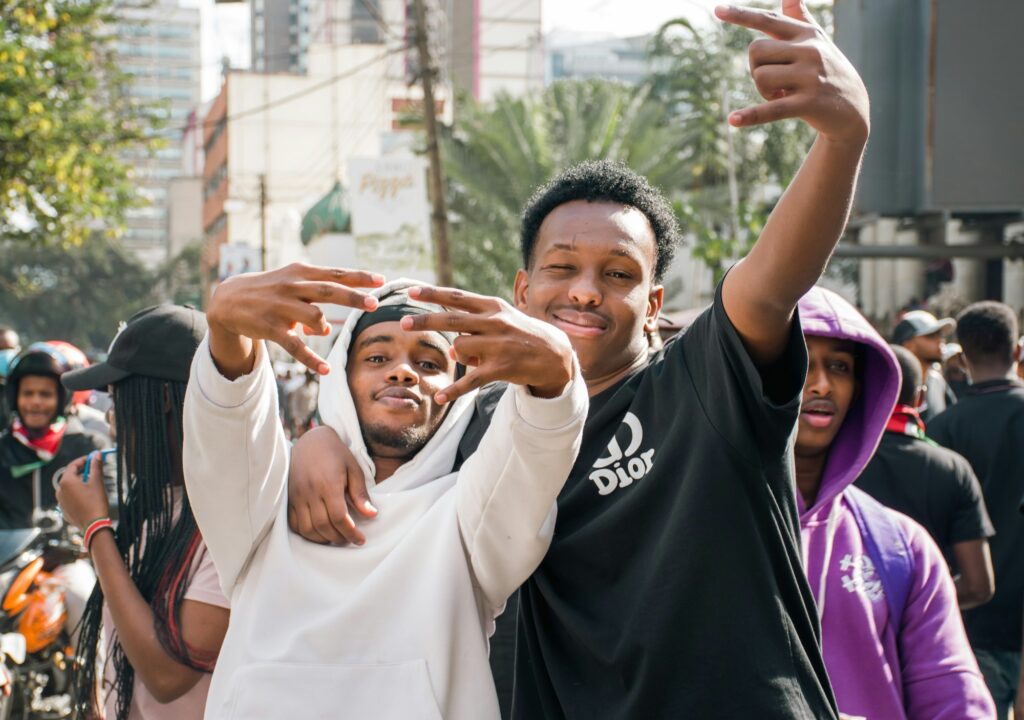
At the same time, Kenyan MPs were busy within Parliament passing the very Finance Bill the protestors were in the streets opposing. Consequently, the protestors were even more motivated to reach their goal: occupy Parliament.
Tensions Flare and Lines Are Crossed
Shortly before 3 p.m., a surge of protesters breached the outer metal barricades of the Kenyan Parliament. Police responded with tear gas and water cannons; rubber bullets followed. Then, in an unprecedented escalation, officers began firing live rounds into the crowd as the protestors entered; and later as they left the grounds. Video footage captures the moment shots ring out—protesters scattering, smoke and dust swirling, and bystanders screaming in shock.
Flames in the Chamber
Amid the chaos, a faction of protesters forced entry into the chamber itself, overturning chairs and setting a section of the building ablaze. In seeming hysteria and with simmering tension, the protestors only stayed in Parliament for about 5 minutes, before leaving. It was during this time that Police and military personnel regrouped, unleashing another volley of live fire, killing 1 of the 3 protestors that died by bullet-fire that day.
By mid-afternoon, the compound looked like a battlefield: bellowing smoke, the sickly stench of teargas, shattered glass, and bloodstains on the tarmac leading to the premises’ entry-way.
Lives Cut Short: The Three Gen-Z Martyrs
David Chege, 39
A self-taught software engineer and father of two, who volunteered at his local Sunday school, Chege was protesting near the visitors’ entrance of Parliament buildings when a single bullet tore through his skull. He collapsed two meters from the gate and died on the spot. Colleagues remember him as “unfailingly kind and focused on solutions,” traits he carried into the protest.
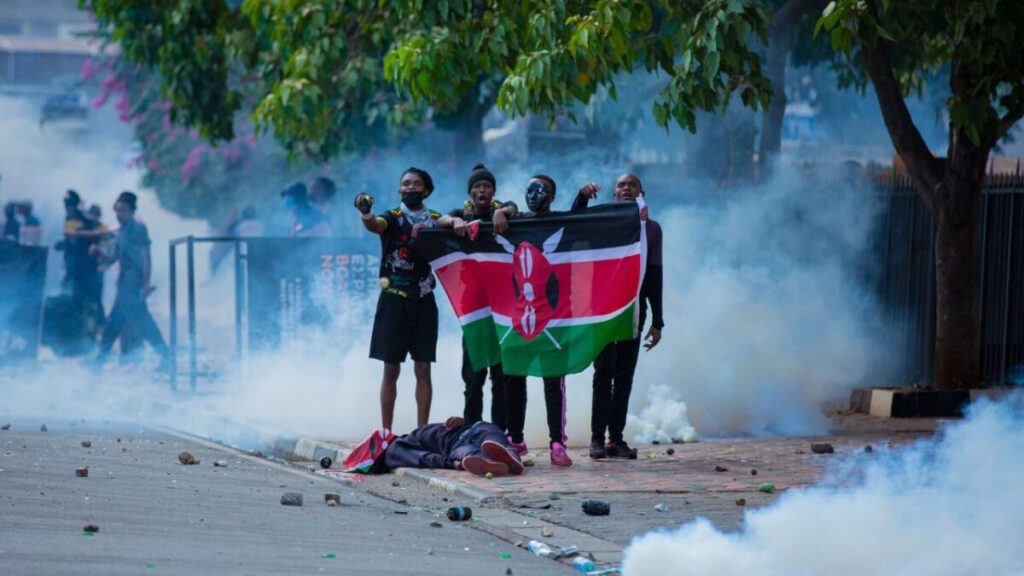
Ericsson Mutisya, 25
A butcher from Eastleigh, Mutisya joined the protest hoping to highlight the needs of his community. Seconds after Chege was hit, he was struck twice in the torso. Video footage shows him wearing his workplace attire: white overalls in the front line, moments before being struck down by bullets—all while utterly unarmed and non-aggressive.

Eric Shieni, 27
A finance student at the University of Nairobi, Shieni was last seen running from advancing lines of riot police through a haze of teargas. In the ensuing footage, he inexplicably drops on top of the now collapsed gate, before a single shot rings out. The bullet entered his temple, tearing through his cap. He died instantly.
The shot that killed him originated from an officer 25 meters behind him, who stood in a firing stance, and went for a head-shot of the unarmed protestor.
Forensic OSINT: Piecing Together the Truth
Gathering and Verifying Evidence
BBC Africa Eye’s team collected over 5,000 video clips, photographs, livestreams, and CCTV recordings from journalists, protesters, and bystanders. Each file underwent:
Metadata extraction (EXIF) to confirm timestamps and GPS coordinates
Authentication checks to rule out editing or tampering
Cross-referencing with public clocks—on broadcast tower cameras and nearby government buildings—to synchronize all footage within one-second accuracy
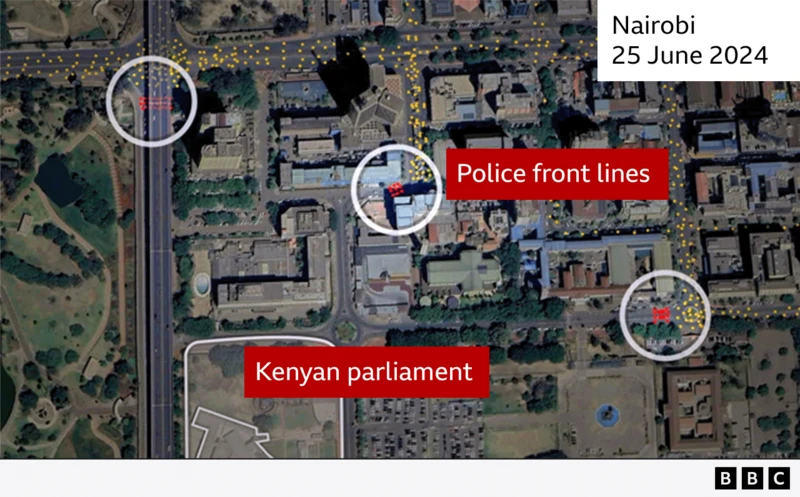
3D Reconstruction and Trajectory Analysis
A dedicated geo-spatial analyst built a detailed 3D model of the Parliament precinct using satellite imagery and architectural plans. Investigators then:
Marked officer regalia documented in the thousands of photos and videos taken at the scene
Mapped protestor and police positions visible in the videos taken then
Calculated angles and distances to determine shooter locations
This analysis proved none of the three victims was close enough to pose a threat when they were shot—and that the shots were fired deliberately into non-violent targets. It was as if the (police/army) shooters were sending a message to the protestors: leave or die!
Naming the Shooters: The Findings of the BBC-Africa Eye Documentary – Blood Parliament
Officer X (National Police Service)
Wearing full riot gear and an anti-riot helmet, an unnamed police officer is seen kneeling on Parliament Road, taking careful aim at the protestors.
Audio captured on a protester’s phone records another officer, identified as John Kaboi (Nairobi Central Police Station) shouting “Uaa!” (“Kill!”), just before the other (unnamed) officer pulls the trigger twice in rapid succession—the shots that killed Chege and Mutisya within three seconds of each other.
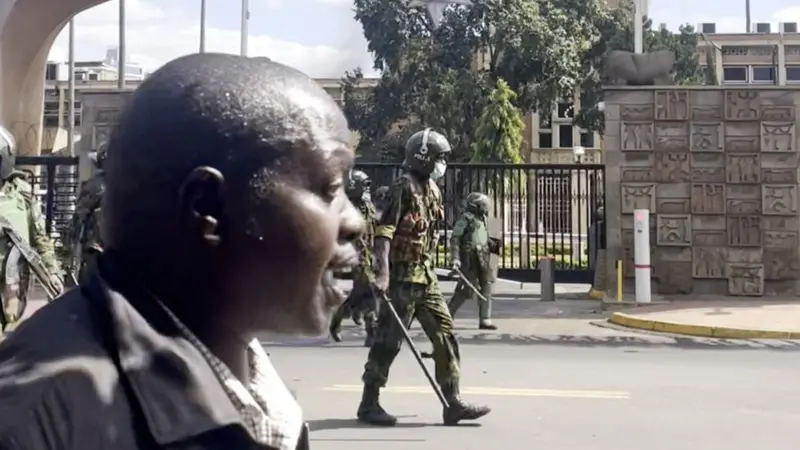
The Unnamed KDF Marksman
Near the compound’s north wall, the OSINT team identified a Kenya Defence Forces soldier in a dark tactical vest and distinctive camouflage pattern. Adopting a firing stance (while standing upright), he fired one shot directly into Shieni’s head as the student fled through a cloud of tear gas and got caught in a stampede at the gate. The line of sight and the footage of the soldier’s stance leave no doubt about the fatal shot.
Accountability Deferred: An Institutional Failure
IPOA’s Paralysis
The Independent Policing Oversight Authority, the agency tasked with investigating police misconduct in Kenya, received a formal parliamentary request to probe the June 25 shootings.
Yet, nearly a year later, IPOA has produced no public report, interviewed no named suspects, and filed zero prosecutorial charges against the individuals responsible. When pressed, IPOA officials claim they lack “full cooperation” from the National Police Service, an excuse they often rely on to shadow their incompetence.
Since the June 2024 protests, over 60 Kenyan youths have been killed, and hundreds more abducted and/or disappeared. These actions are believed to have been in retaliation to the protests, and undertaken by masked plain-clothed security personnel linked to rogue police units.
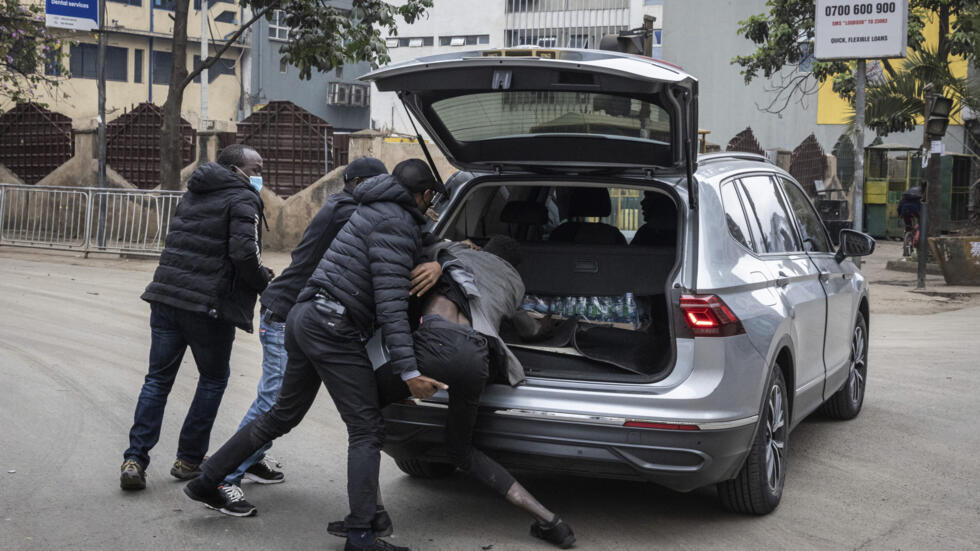
Military Stonewalling
When BBC Africa-Eye reached out to the Kenya Defence Forces, the KDF acknowledged their presence on the scene “to assist the national police during violent protests”. They, however, insist that IPOA has not informed, written, or requested for any information regarding any of their officers in relations to the Parliament killings on June 25th.
A Culture of Impunity
As the BBC Africa-Eye Documentary Blood Parliament reveals, this isn’t an isolated incident. Human rights groups documented dozens of protest-related shootings nationwide, with many misclassified in morgue logs as “road traffic accidents.”
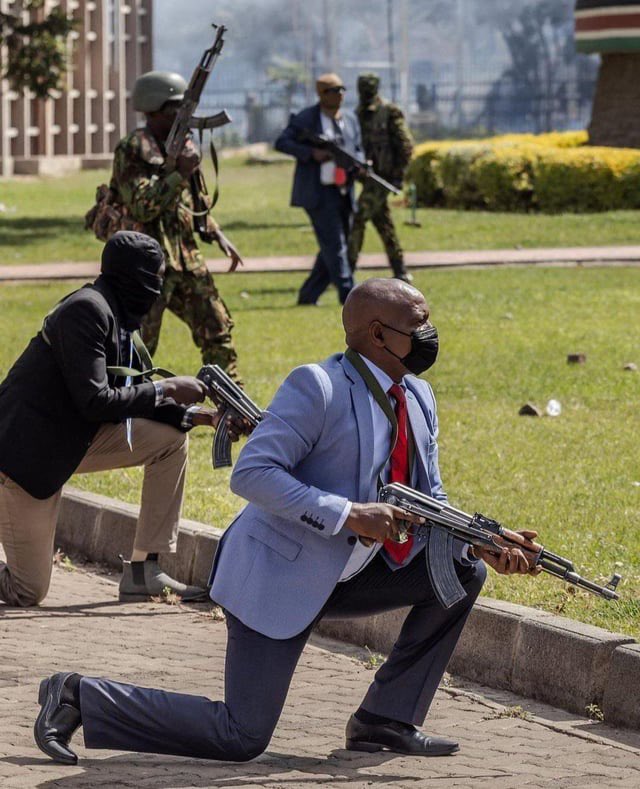
Enforced disappearances continue: 32 people remain missing since June 2024, with credible reports of torture in secret detention facilities.
Related: Kenyan Minister Calls Out Ruto’s Government Over Abductions and Killings
Political Aftershocks and Fiscal U-Turns
The President’s U-Turn
On June 26, President William Ruto announced he would withhold assenting to the Finance Bill 2024. Instead, he signed an Appropriations Bill, cutting KSh 346 billion from the 2024 budget and instructing ministries to find savings through retrenchment and reduced travel allowances.
Cabinet Shake-Up
In early July, Ruto dismissed most of his ministers, keeping only portfolio-holders in diplomacy and Treasury. The gesture aimed to placate disillusioned youth but critics called it a cosmetic reset that left entrenched power structures intact.
Austerity Measures and IMF Talks
By August, government directives ordered the dissolution of 47 state corporations and a 30 percent cut in non-essential expenditures. Simultaneously, Nairobi resumed negotiations with the International Monetary Fund for a standby arrangement—an organization the protestors blamed for having too much influence on the country’s fiscal policy.
The Movement Lives On
A Pan-African Inspiration
Kenya’s leaderless, digitally coordinated uprising has inspired youth activists across Africa. In Uganda and Nigeria, students have borrowed the #RejectFinanceBill tools—memes, SMS blasts, livestreams—to challenge their own governments’ austerity measures.
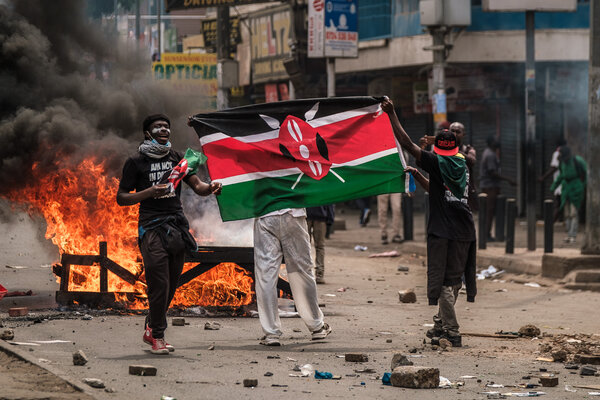
Legal Battles and Grassroots Vigilance
Families of the three victims, backed by human rights lawyers, have filed court petitions demanding release of internal police records, ballistics reports, and wrapped-up investigations.
Kenya’s youth have since then relied on creating social-media storms to keep the pressure on authorities, and reverberate the call for Justice for the fallen Gen-Z heroes.
Related: Mashujaa Day 2024: Remembering the 61 Fallen Gen-Z Heroes Killed During the June Protests
The Path to Justice
The BBC Africa-Eye documentary Blood Parliament proves that, even when formal systems fail, a combination of citizen journalism, open-source sleuthing, and forensic science can illuminate the truth—and force it into the public eye. Yet nine months on, no officer has faced prosecution for the killings. For Kenyan youth, their core demands remain:
Transparent, independent investigations with published findings
Criminal charges against officers who violated Kenyan law and constitutional rights and took the lives of innocent protestors
Security-sector reforms guaranteeing civilian oversight and accountability as per constitutional mandates
Legal protections firmly enshrined for the right to peaceful assembly
As one witness told BBC Africa Eye, “We don’t want revenge; we want justice so no parent’s child has to die for speaking out.” The blood spilled on Kenya’s Parliament demands a reckoning—one that will test Kenya’s commitment to democracy and the rule of law.
Read more on the BBC Africa-Eye’s findings on the official BBC website. For more on the aftermath of the Gen Z Protests in 2024, read our series: The Political Crisis in Kenya 2025.
This article has been written with the help of A.I. for topic research and formulation.


